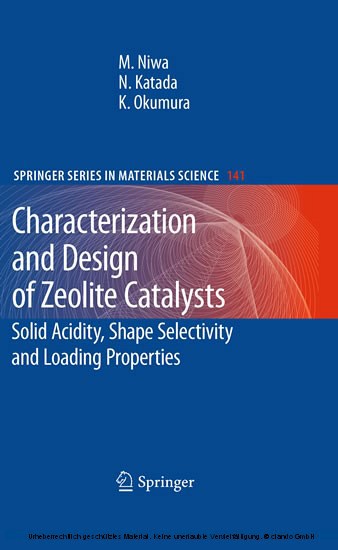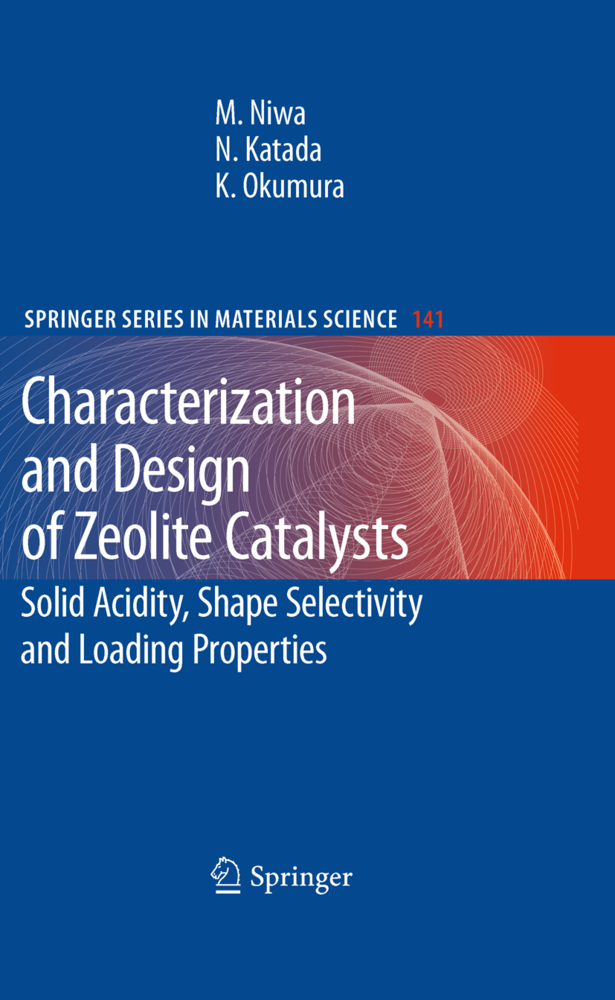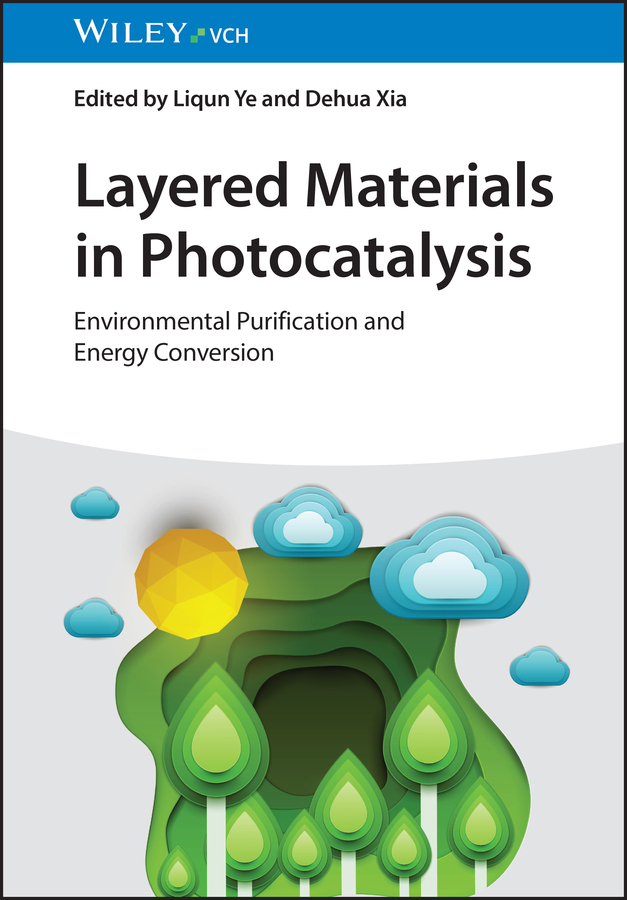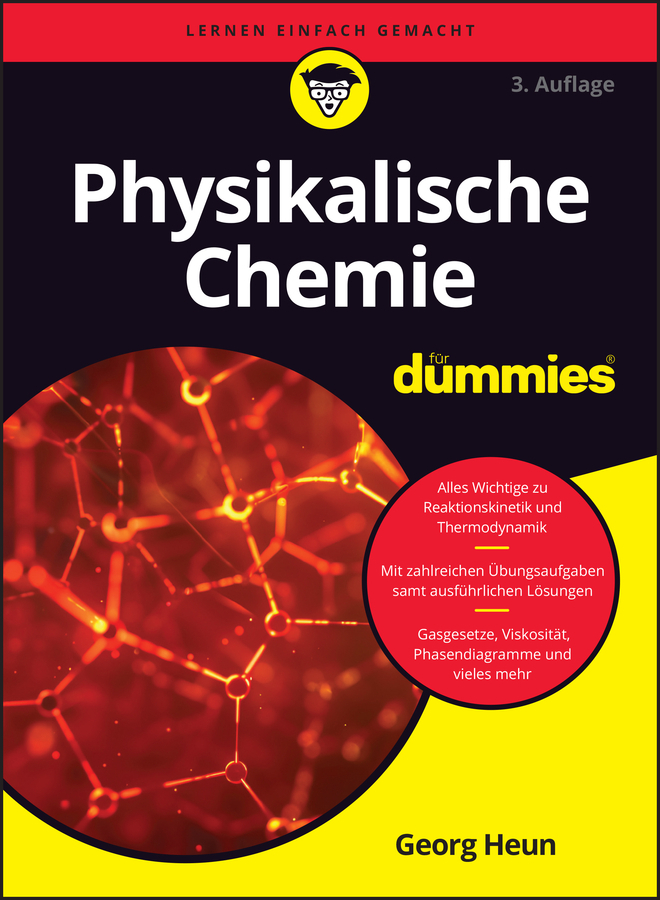Characterization and Design of Zeolite Catalysts
Solid Acidity, Shape Selectivity and Loading Properties
Zeolites are microporous, aluminosilicate minerals commonly used as commercial adsorbents. Zeolite-based catalysts are used by industrial chemical companies in the interconversion of hydrocarbons and the alkylation of aromatic compounds. The current book deals with the characterization of specific properties of Zeolites and calculations for the design of catalysts. Measurements and utilization of solid acidity, shape selectivity, and loading properties, that are three prominent properties of a Zeolite catalyst, are treated in detail. These features concern chemical vapor deposition of silica, shape selectivity, loading properties, solid activity, Brønsted or Lewis character, ammonia temperature programmed desorption, control of the pore-opening size by chemical vapor deposition of silica and XAFS analysis of metals being highly dispersed inside and outside a framework.
1;Preface;62;Contents;83;Chapter 1 Introduction to Zeolite Science and Catalysis;123.1;1.1 General Trend of the Zeolite Acid Catalyst: Species, Structure, and Industrial Application;123.2;1.2 Property of Zeolite Catalyst: Acidity, Shape Selectivity, and Loading Property;163.3;1.3 Intention of the Publication with the Background of the Zeolite Chemistry;173.4;References;194;Chapter 2 Solid Acidity of Zeolites;204.1;2.1 Multiple Characterization Techniques;204.1.1;2.1.1 Physical Properties;204.1.2;2.1.2 Chemical Properties;214.2;2.2 Fundamentals for the TPD of Ammonia;224.2.1;2.2.1 Experimental Apparatus of the TPD Method;224.2.2;2.2.2 Identification of the Desorption, l- and h-Peaks;244.2.3;2.2.3 Identification of Ammonia Desorbed from Y Zeolite;254.3;2.3 Theory for the TPD of Ammonia;264.3.1;2.3.1 Conditions of the Equilibrium;264.3.2;2.3.2 Derivation of a Fundamental Equation;284.3.3;2.3.3 Determination of .H and Constancy of .S (Desorption);304.4;2.4 Practical Measurements of Ammonia TPD;314.4.1;2.4.1 Curve Fitting Method to Measure the Strength of Acid Site;314.4.2;2.4.2 .H on Various Zeolites with Different Concentrations of Acid Site;324.5;2.5 Number of Acid Sites on Various Zeolites;354.5.1;2.5.1 Number of Acid Sites Correlated with Al Concentration;354.5.2;2.5.2 In Situ and Ex Situ Prepared H-type Zeolites;374.6;References;385;Chapter 3 IRMS-TPD Measurements of Acid Sites;395.1;3.1 Measurement Method;395.1.1;3.1.1 What Is Obtained from the TPD Measurement;395.1.2;3.1.2 Experimental Methods;395.1.3;3.1.3 Required Corrections, IR Band Position and S;415.2;3.2 Proton Form Zeolite;425.2.1;3.2.1 H-Mordenite;425.2.2;3.2.2 H-Y and H-Chabazite;445.3;3.3 Modified Zeolites;495.3.1;3.3.1 Multivalent Cation-Modified Zeolite;495.3.2;3.3.2 Ultrastable Y (USY) Zeolite;515.4;3.4 Distribution of Brønsted Acid Sites Dependent on the Concentration;535.5;3.5 Relationship Between Stretching Frequency and Ammonia Desorption Heat of OH Group;555.6;3.6 Distorted Structure of Zeolite and Related Material with Lewis Acidity and Broad Distribution of Acid Strength;575.7;3.7 Measurements of Metal Oxide Overlayer;625.8;3.8 Extinction Coefficients of NH4+ and NH3 Adsorbed on Brønsted and Lewis Acid Sites, Respectively;655.9;References;696;Chapter 4 DFT Calculation of the Solid Acidity;706.1;4.1 DFT Calculation;706.1.1;4.1.1 DFT Calculation Applied to the Study on Brønsted Acidity;706.1.2;4.1.2 Embedded Cluster and Periodic Boundary Conditions;716.2;4.2 Application to Chabazite, a Simple Zeolite;726.2.1;4.2.1 Brønsted Acid Sites in Chabazite Based on the Models Within the Periodic Boundary Conditions;726.2.2;4.2.2 Brønsted Acid Site in an Embedded Cluster Model;746.3;4.3 Application to Other Zeolites;746.3.1;4.3.1 FAU, MOR, and BEA Calculated Under the Conditions of the Embedded Cluster and the Periodic Boundary;746.3.2;4.3.2 MFI, FER, and MWW Calculated Under the Embedded Cluster Model;766.4;4.4 Modified Zeolites;786.4.1;4.4.1 Divalent Cation-Exchanged Y Zeolites Based on the Embedded Cluster Model;786.4.2;4.4.2 Modified Brønsted OH in Y Zeolite Based on the Periodic Boundary Conditions;806.5;4.5 Dependence of Brønsted Acid Strength on Local Geometry;816.6;References;877;Chapter 5 Catalytic Activity and Adsorption Property;887.1;5.1 Paraffin Cracking;887.1.1;5.1.1 Evaluation of Intrinsic Activity of Acid Site;887.1.2;5.1.2 Dependence of Activity on Acid Strength;907.1.3;5.1.3 Thermodynamic Description on Correlation Between Activation Energy and Ammonia Desorption Heat;957.1.4;5.1.4 Behavior of Acid Sites in 8- and 12-Rings of Mordenite;977.2;5.2 Adsorption of Aromatic Hydrocarbons;987.3;5.3 Friedel--Crafts Alkylation on Ga-MCM-41;1027.4;5.4 Amination of Phenol into Aniline on Ga/ZSM-5;1067.5;References;1098;Chapter 6 CVD of Silica for the Shape Selective Reaction;1118.1;6.1 Reactants and Products Shape Selectivity, Concept and Definition;1118.2;6.2 Chemical Vapor Deposition of Si
Niwa, Miki
Katada, Naonobu
Okumura, Kazu
| ISBN | 9783642126208 |
|---|---|
| Artikelnummer | 9783642126208 |
| Medientyp | E-Book - PDF |
| Auflage | 2. Aufl. |
| Copyrightjahr | 2010 |
| Verlag | Springer-Verlag |
| Umfang | 186 Seiten |
| Sprache | Englisch |
| Kopierschutz | Digitales Wasserzeichen |








